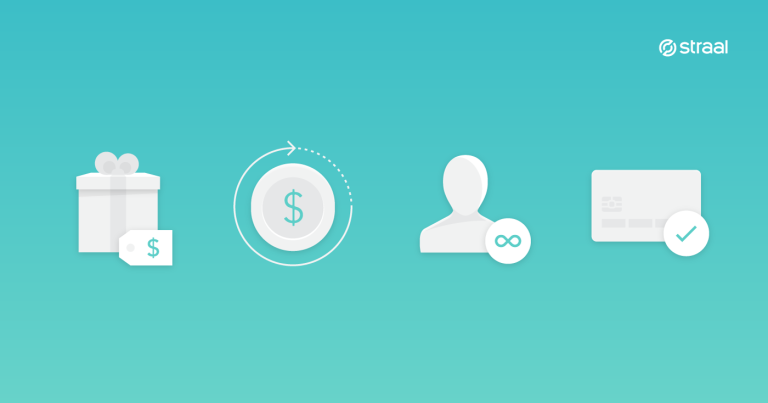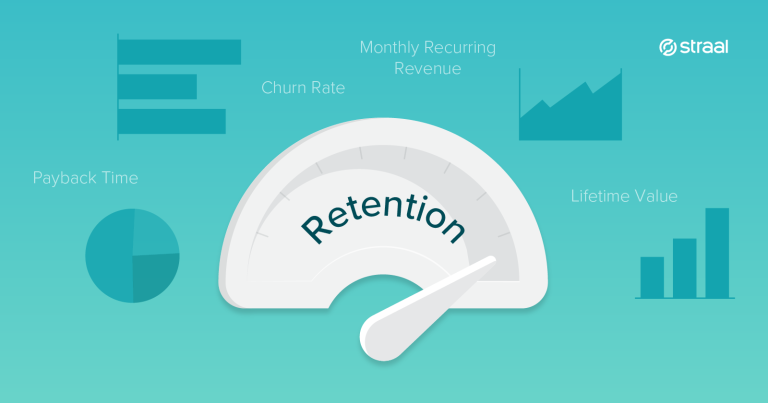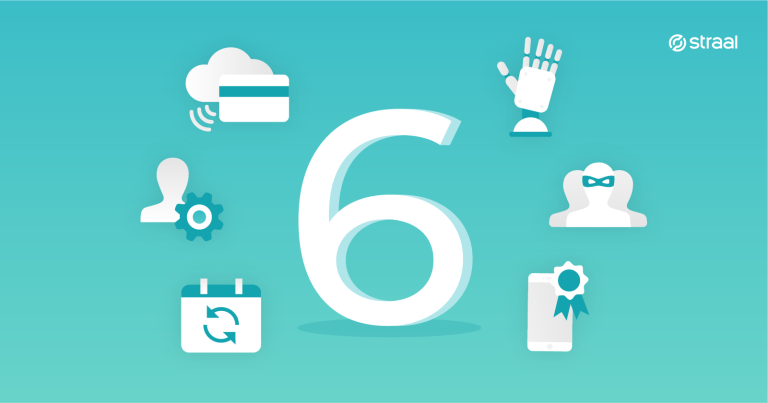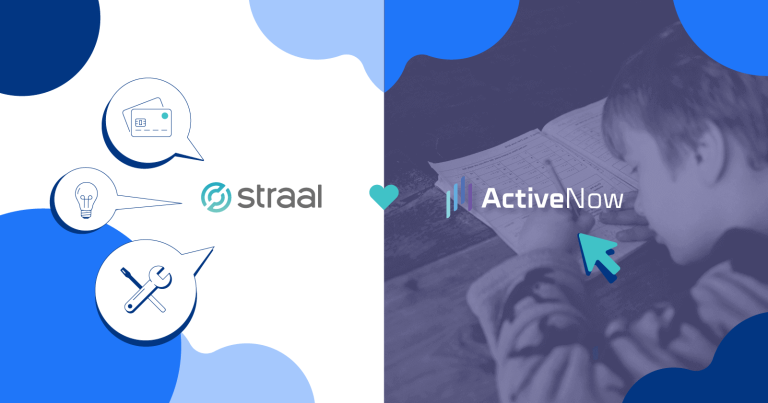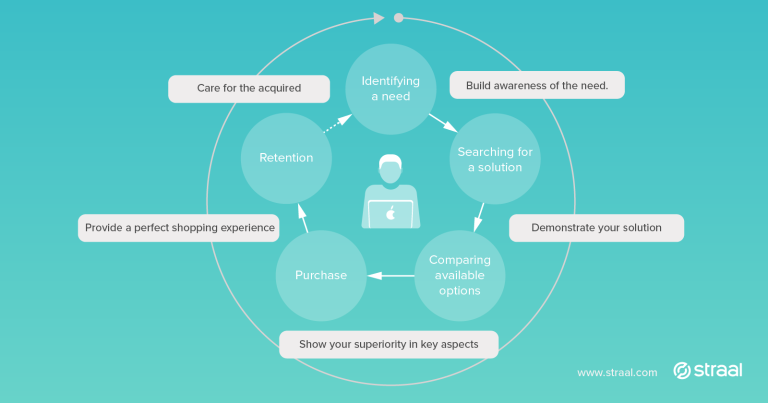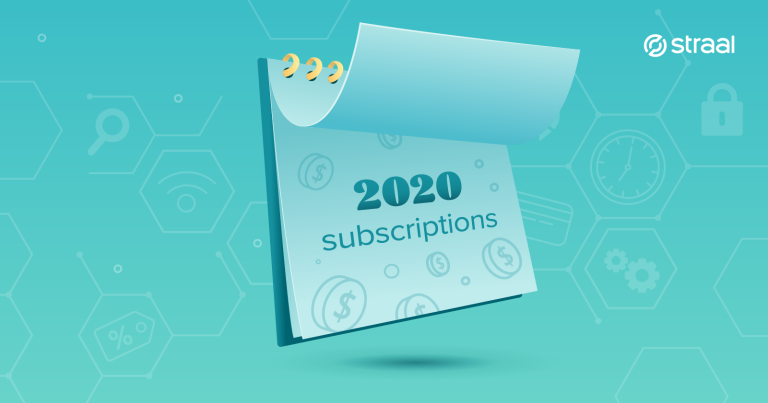Is technological change dictating our behavior or is it our behavior that drives technology? The answer to that question probably lies somewhere in the middle. It’s much clearer if we narrow it down to our shopping habits. Technology has been the customer’s loyal ally who empowered them, mercilessly magnifying businesses’ strengths and flaws. In the times of flourishing subscription economy, understanding the current state of affairs is of utmost importance. To help you embrace the new mindset, I‘ve decided to dust the notion off and explain how technology impacts subscriber experience.
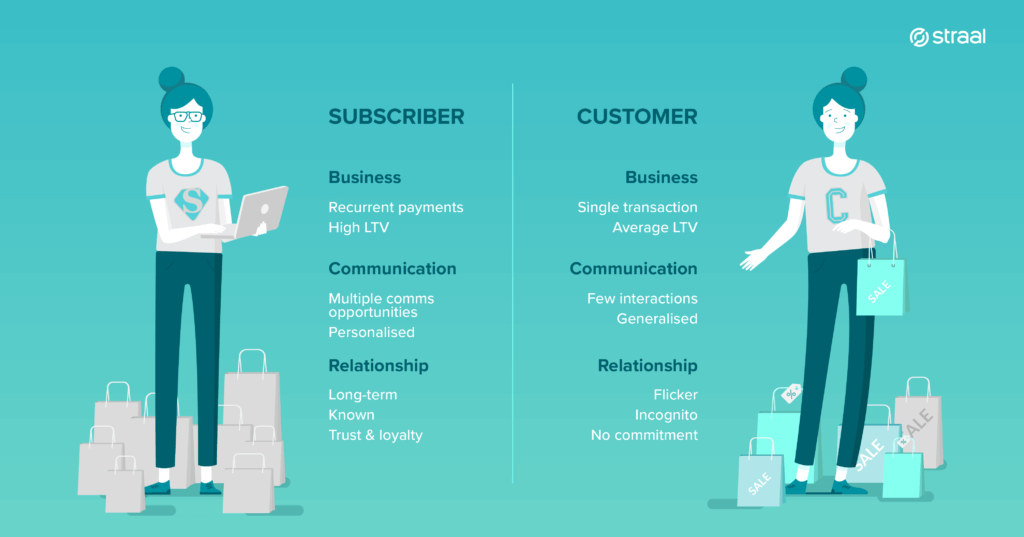
Customer experience before subscriptions
First, let me offer you a throwback to the early days of the customer experience. I can tell you how it used to work for myself. I went to a shop, usually with a preconceived idea of what to get. I picked up an item from the shelf, gave it a thorough look, quickly scanned its surroundings for an alternative option and, if nothing caught my eye, I paid for it at the counter and wished the cashier a great day on my way out. End of story. What would a marketer prioritize back then? Brand recognition and awareness – the product’s potential to monopolize the customer’s attention.
Then, the Internet brutally redefined the customer journey and lifted the bar. The rise of ecommerce brought on the Zero Moment of Truth – a major game changer for entrepreneurs. Why the name? The customer started to make the decision about their prospective purchase well before crossing the store’s threshold. They turned to the web to get a specific answer, like “How to remove a wine stain from a silk tablecloth?”. The brand or rather the product that had the answer, the one that addressed that particular question was the winner. Soon later, the marketing roadmap started to be marked by the product’s own branding and social proof, relying largely on the users’ complimentary reviews online.
Our quest for socially approved services propelled yet another transformation of the retail landscape, foreshadowing the dawn of the sharing economy. Do not get me wrong. I’m far from saying that that subscription economy is a novelty or a rupture. We all have that collective retro memory of a newspaper and a bottle of milk delivered to our doorsteps in the old times. Subscriptions have returned into vogue from the pre-digital era. There’s a new dimension to this renaissance though. Rachel Botsman was right about trust being the currency of the new economy. Can you imagine choosing a brand without a proper extensive research? It’s not even necessarily about buying any longer. We’re renting, sharing or getting access to service or content. Moreover, in doing so, we rely on other customers’ recommendations and feelings. Possession is no longer a prerequisite for customer satisfaction. What is in that case? Let me set it straight. It’s experience.
Subscriptions: more for less, but for longer
As the McKinsey report shows, financial incentive is one of the top reasons for subscribing. Take Spotify as an example. Hardly anyone could afford all the albums available there, but all it really takes to experience the music it has in store is to become a subscriber, which costs substantially less. Likewise, Adobe Systems’ software, prior to their bold move to the cloud-based subscription model, was way too expensive for home users. Would they be as powerful as they are today if it hadn’t been for subscriptions? I venture to say that subscribing to rather than owning software will soon become a basic premise to how software businesses operate in general. It should absolutely be an eye-opener for all SaaS companies. Furthermore, as you must have noticed, the line between product and service is becoming ever finer. Subscriptions disruptively turn things upside down, but they have gravitational force as well. They attract customers like magnet, tempting them with a plethora of opportunities and countless new experiences. Doesn’t it make you feel powerful to know that a limitless world of culture and innovation is just a click away?
Customer acquisition vs subscription renewal
Businesses are always chasing after new customers. In the realm of the sharing economy, the focus, however, is on nurturing the needs of your long-standing customers. This entails adapting your communications and management strategies, but above anything else, it all boils down to delivering unique value to them throughout their lifecycle. Do not do this because you have to. Do it because it’s worth it. Harvard Business Review estimates that bringing a new customer is from 5 to 25 times costlier than retaining an existent one. In the long run, only a 5% boost in customer retention enlarges your profit by 25%.
Additionally, your loyal customers are less likely to explore your competition’s offering and keener to recommend your service further. Having them as your brand ambassadors should, therefore, be high on your priority list. The word-of-mouth marketing is, after all, incomparably more impactful and credible than any other of its forms. If you’d like to further explore this avenue, you ought to think of what incentives you can offer to make renewals rewarding and, consequently, halt your subscribers’ slide back into being customers.
Lifetime value becomes larger than life
Customers are flickers. They come and go. By nature, subscriptions are meant to last. They are relationships – emotional and financial in equal measure. It already sounds like a rather lucrative proposition and it finds its reflection in numbers as well. To measure the success of subscriptions, it’s crucial to gauge the customer lifetime value (LTV). The term itself refers to the value, the profit of the entire relationship with the customer. If you put merchants that offer both subscription and one-time purchase models under scrutiny, you’ll find out that those with an average order value of $25 or less experienced a 1.78 percent increase of the LTV for customers choosing the subscription model. Basically, subscribers purchase more. It would be inappropriate to finish on a financial note though so it bears repeating – the currency of the sharing economy is trust. Hence, before you expect extra profits, make sure you go the extra mile in terms of refining your service.
The new heights of personalization
Businesses obsess over customer experience goals. While its value is irrefutable, tailoring your offer to the needs of individual customers may be painstakingly difficult. Oftentimes, merchants end up doing the polar opposite, generalizing whatever parameters and sales data they are able to extract. Subscriptions enable your customers to be vocal about their needs. If you use the right tool for analytics, you won’t find yourself lost in enormous amounts of data. Instead, you will automatically receive unique information that will help you individualize your offer. Make it personal on the payment front too – let your subscribers choose the way they like paying by giving them the flexibility they need. Upon choosing the payments gateway, verify if it lets them smoothly modify how they pay. For instance, if a subscriber who subscribes to a 12-month plan wants to switch to a monthly billing from an advance payment, make sure the process is seamless and effortless. All the math should be done by the system to prevent setbacks and friction. Indeed, being elastic payment-wise is fundamental to a positive subscription experience so… stretch your business!
How do payments tie in?
An appropriate payment strategy is paramount to your success and will directly contribute to maximizing all of the above. You’re welcome to educate yourself further on the payment ecosystem through our guide. Whatever you decide to do, remember to always look at your solutions from the subscriber’s perspective. There’s nothing more irritating than getting payment declined, being asked to enter the same payment details in perpetuity or having to hurdle over all the security measures. If your subscribers have to relive it every month – 20% of them simply won’t do business with you again. Frictionless payments are, therefore, an inherent part of a positive subscription experience, the key to unlock the potential of your company. Conclusion? Do not underinvest your payment strategy.
Your subscription strategy
I hope I’ve painted a picture of opportunity for you. No matter if you’re an owner of a future unicorn startup just about to take the world by storm or a seasoned entrepreneur running a prosperous business, the subscription economy is here to stay and reshape the way we do business. Do not merely be part of the future e-commerce. Create it yourself.
If you have any further questions about the subscription market, take a look at the rest of our blog posts or feel free to contact our team!

